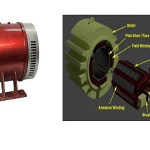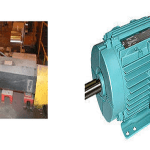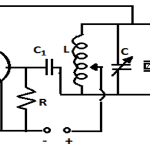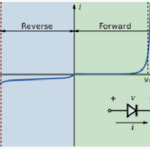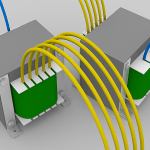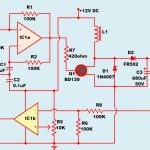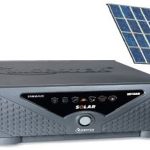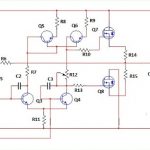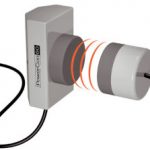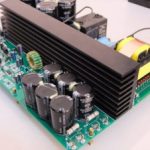In the scope of electrical technology, a parallel circuit is described to be shunt. Direct current motors and generators where the armature and field windings are parallelly connected are termed as DC shunt motors and DC shunt generators. Fundamentally, a similar machine can be utilized as motors and generators. The foremost variation in between these devices is that in the DC shunt motor the input is of electrical energy and the output is mechanical … [Read more...]
Differences between DC Series and Shunt Motors
Before knowing about the differences between DC Series and Shunt Motors, let us start to know what a DC motor is. An electric motor that is powered up by direct current is termed as DC motor. In a detailed view, when a current-carrying conductor is positioned in the area of a certain magnetic field, it gains some torque and tends to have a moment. So, this is the same principle where a DC motor also works on. A DC motor is also named depending on the type … [Read more...]
What is Piezoelectric Generator : Circuit Diagram and Its Working
One might surely come across the situation of power supply either they are in the inadequacy of power or difficulty with power generation. Based on the principle of energy conversions, these piezoelectric generators deliver many advantages in multiple applications and industries. As piezoelectricity moves with the concept of conversion of energy from one form to another, generators also work on the same. But, what does a combination of piezoelectricity and … [Read more...]
What is Breakdown Voltage : Avalanche Breakdown & Zener Breakdown
When we are about to discuss the concept of breakdown voltage, first we need to think about the concept of why it is needed and why it has to be implemented? So, let’s go with a clear interpretation. For the functioning of power transmission systems, there will be a requirement of power transformers. The insulation medium in the transformers gets reduced when it is made in contact with moisture, acids, oxygen, and heat. Of all these, heat is the foremost … [Read more...]
Types of Transformers and Their Working
The development of the electrical and electronics industry seems to be continually progressing with the invention of various electronic devices. The one device that has to be probably discussed is a Transformer. There is a wide range of applications through a transformer and just not with a single type of transformer, scientists have invented various kinds and each one has its own applications and advantages, either in commercial or real-life scenarios. … [Read more...]
DC to DC Converter Operating Principle and Functionality
There are various types of power electronic converters which are frequently used in electric power system applications such as power converter, regulated power supply, DC power supply and so on. The power electronics converters can be classified as AC to DC converter or Rectifier, DC to AC converter or Inverter, AC to AC converter, DC to DC converter, and so on. These converters are again classified into different types based on different criteria. If we … [Read more...]
How Solar Inverter Works And Its Applications
Nowadays, the necessity of the using renewable sources like solar has increased. A solar inverter is a common inverter but uses energy from the sun that is solar energy. This type of inverter aids in changing the DC into AC using solar power. DC is the power which flows in one direction in the circuit and helps in providing current when there is no electricity. Direct current is used for small appliances such as gadgets, iPod, MP3 players, etc. where there … [Read more...]
What is a Power MOSFET : Basics, Working and Its Applications
The Power MOSFET is a type of MOSFET. The operating principle of power MOSFET is similar to the general MOSFET. The power MOSFETS are very special to handle the high level of powers. It shows the high switching speed and by comparing with the normal MOSFET, the power MOSFET will work better. The power MOSFETs is widely used in the n-channel enhancement mode, p-channel enhancement mode, and in the nature of n-channel depletion mode. Here we have explained … [Read more...]
Wireless Power Transmission Technology with Applications
Nowadays electricity is considered as one of the basic needs of human beings. The conventional power transmission system uses transmission lines to carry the power from one place to another, but it is costlier in terms of cable costs and also there exists a certain transmission loss. One maintainable technology leading this charge is a wireless power transmission (WPT) . It is also known as inductive power transfer (IPT). … [Read more...]
How Switch-Mode Power Supply (SMPS) Works?
Power supply is an electronic circuit that is used for providing the electrical power to appliances or loads such as computers, machines, and so on. These electrical and electronic loads require various forms of power at different ranges and with different characteristics. So, for this reason the power is converted into the required forms (with desired qualities) by using some power electronic converters or power converters. … [Read more...]
